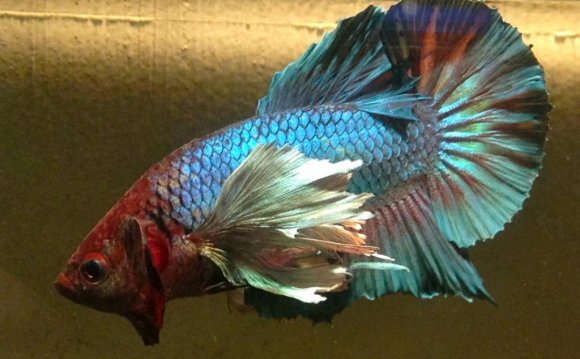
Head, shoulders, fins and tail. fish anatomy 101
Can fish see color? Do they drink water? Are you a 'fish out of water' when friends and family ask questions about your new pets? Understanding what healthy, happy fish look like will help you be a better pet parent and spot health problems before it's too late.
What we have in common:
Eyes
While scientists don't know everything about fish anatomy yet, it is believed that fish have eyes that work like ours. Scientists believe fish can see colors, and some even think that fish may even be able to see more colors than humans. It's also possible that fish can see ultraviolet light, which means they can see not only what humans see, but also things we can't. Depending on what species of fish you have, their eyes can be located close or further away from their snout. Both are normal, and can actually give you an indication of what some fish like to eat.
Mouth
Unlike humans, fish use their mouths for both taste and smell. To aid with hunting meals, fish also possess chemoreceptors on their heads and snouts, which helps them track down their food via smell.
Ears
Fish do in fact have ears and can hear, though they mostly hear low-pitched sounds. Their ears have otoliths, or tiny bones on top of hairs in the inner ear, which help interpret vibrations as sound. Just like your ears, the inner ear also helps your fish balance and remain upright.
Skin
Like you, fish have skin, but you can probably already tell it's a bit different from yours. It's scaly and slimy, but it's supposed to be that way. Like humans, fish have three main layers of skin: the epidermis (outside layer), dermis (middle layer) and hypodermis (innermost layer).
A fish's scales are firmly attached to the dermis or middle layer of skin. The dermis is also home to pigment scales that give your fish their bright colors. Fish have a color-controlling nerve that, if pinched, will make a fish's color become very bright in that area. The outer layer, or epidermis, covers the scales and contains the cells that produce the natural slimy layer, which protects the fish.
Fish don't turn green when they're seasick, but their skin is a good indicator of illness. Slime is good, but too much slime can mean something is wrong. Fungi, bacterial infections and parasitic infections can all affect fish skin. Healthy skin is smooth and free of bald patches, red or white spots and missing scales.
Did you know fish have skin that—just like you—can get sunburned? Unlike humans, fish don't turn red when their skin is burned. Instead, they begin to lose their coloring and become pale when exposed to too much light. If you notice your little swimmers are getting pale, no need to lather on the SPF; just make sure your fish tank isn't in direct sunlight or exposed to any ultra-violet rays.









